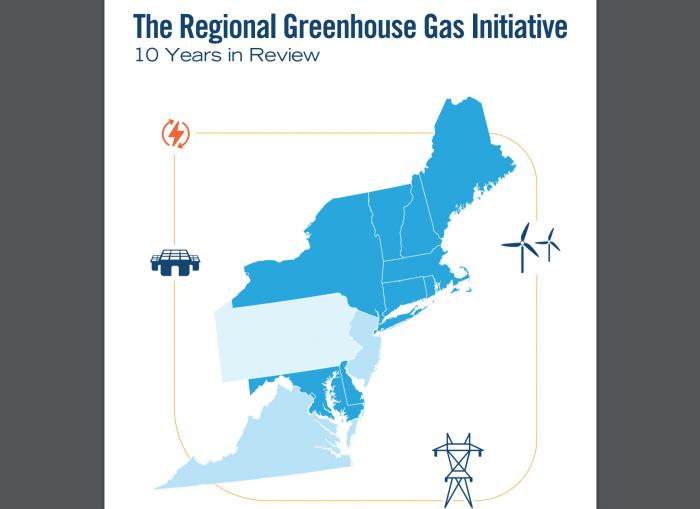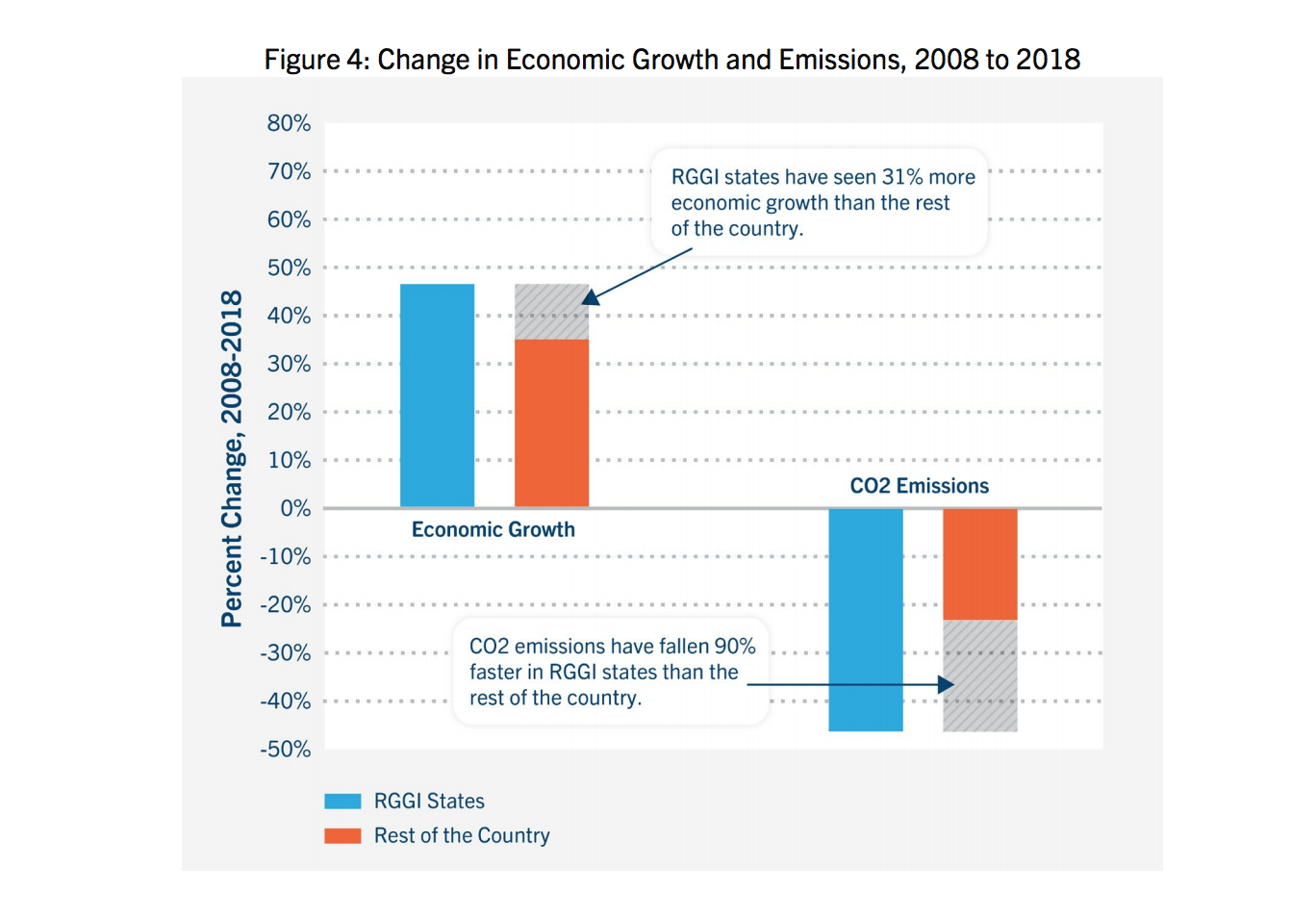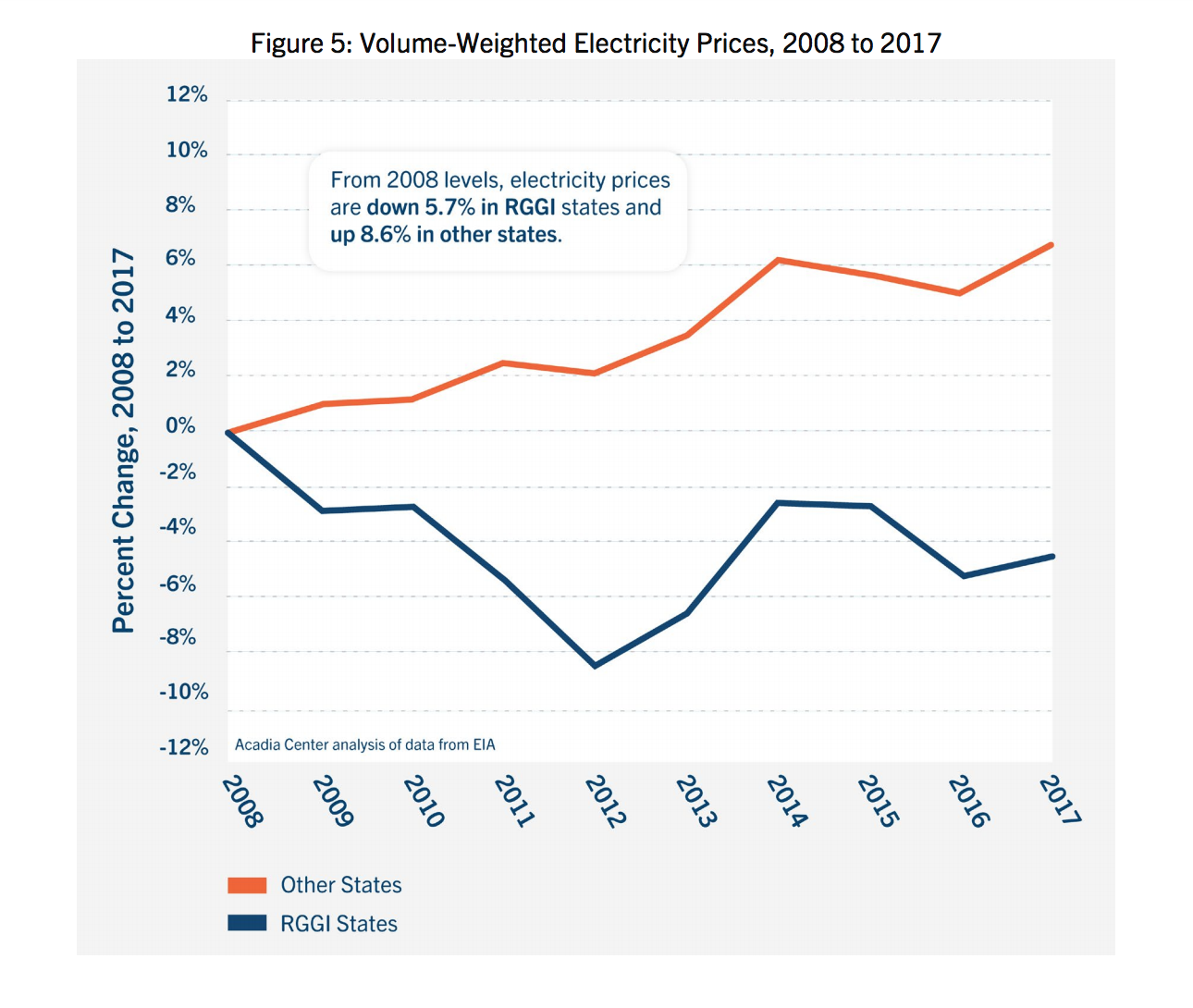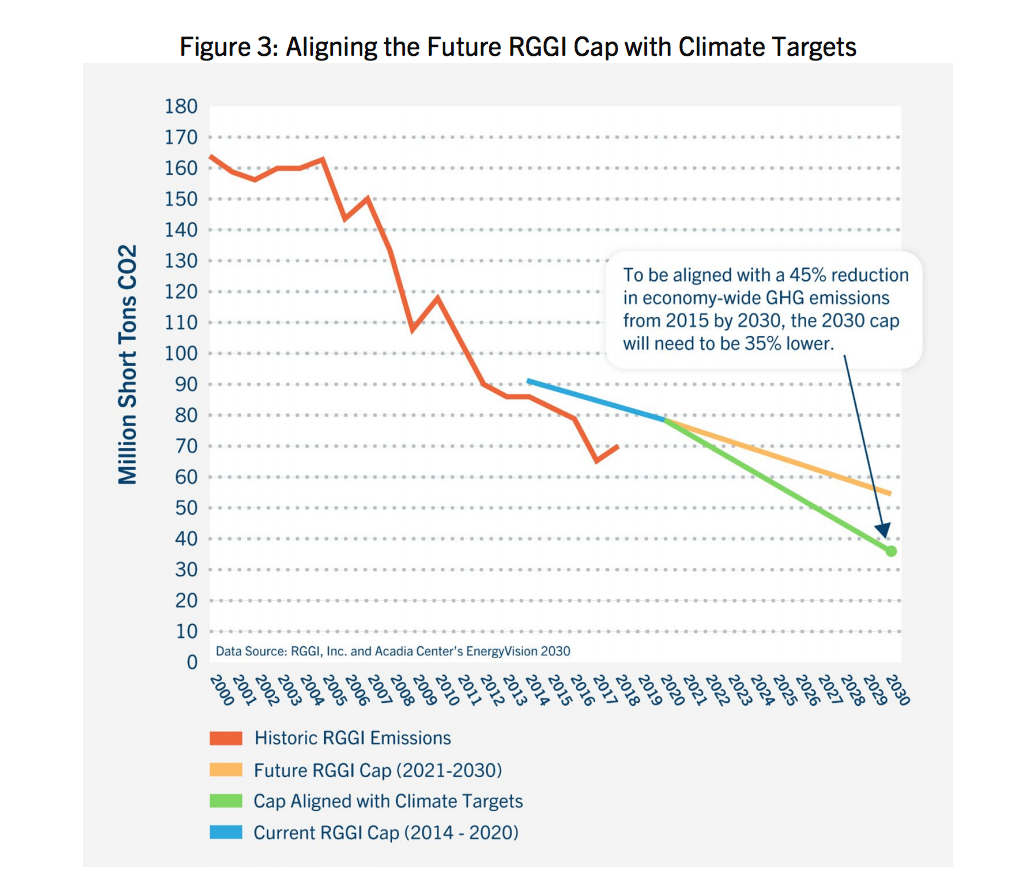RGGI - Acadia Center's 10 Year Review (Reduced Emissions and Economic Growth Go Hand in Hand)


The Acadia Center has released a review of the first ten years of operation of the Regional Greenhouse Gas Initiative, or RGGI (pronounced “Reggie”), and the results are exceedingly positive and show that a clean energy economy really can have it all. The analysis concludes that CO2 emissions from power plants in the RGGI states fell 90% faster during this time period than in the rest of country, while economic growth in the RGGI states outpaced the rest of the country by 31%. CO2 emissions have decreased, harmful co-pollutants have also decreased, the region’s air is cleaner for the health of people and the environment generally, and the economy has benefitted over $4 billion dollars and counting.
According to the Acadia Center and to put the win-win even more clearly in perspective, "Concerns that climate policy would make states less competitive have been directly refuted by RGGI’s experience: the RGGI program is helping participating states outperform the rest of the country."
Key findings include:
- CO2 emissions from RGGI power plants fell 47% (a reduction from 133 million short tons to 70 million tons), outpacing the rest of the country by 90%
- Electricity prices in RGGI states actually fell 5.7%, while prices increased in the rest of the country by 8.6%
- GDP of the RGGI states grew 47%, outpacing growth in rest of the country by 31%
- RGGI generated $3.2 billion in allowance auction proceeds for member states
- RGGI-driven reductions in co-pollutant emissions resulted in over $5.7 billion in health and productivity benefits


Images Above: https://acadiacenter.org/wp-content/uploads/2019/09/Acadia-Center_RGGI_10-Years-in-Review_2019-09-17.pdf
Established by 10 states in 2005, the Regional Greenhouse Gas Initiative (RGGI, and pronounced “Reggie”) was the first mandatory market-based program in the United States to reduce greenhouse gas emissions in the power sector, in this case through a cap and trade mechanism applied to power plants 25MW and larger within the cooperative region. The initial states were Connecticut, Delaware, Maine, Maryland, Massachusetts, New Hampshire, New Jersey, New York, Rhode Island, and Vermont. New Jersey left the program in 2012, but is expected to rejoin in 2020, along with Virginia.
RGGI establishes regional caps on the amount of CO2 pollution power plants can emit, through a limited number of tradable allowances. Each allowance permits a regulated entity to emit one short ton of CO2. The bulk of allowances are distributed through quarterly auctions, and participating states then invest the proceeds in energy and consumer benefit programs and initiatives such as energy efficiency programs, clean and renewable energy initiatives, and direct bill assistance. To date, RGGI states have generated more than $3 billion in economic benefits (and counting) from the program.

With both emissions and electricity prices falling and the economy growing in RGGI states and the region clearly outperforming the country on key indicators, the Acadia Center seems correct that participating states seem to have "proven that decarbonization and economic growth can go hand in hand.” This is ten years of experience and data we can all celebrate and learn from. And the trend seems positive for this type of program. RGGI was groundbreaking and generated a wealth of lessons for continued improvement and for the programs worldwide. First in the US, RGGI was only the second program in the world to regulate carbon emissions, and the first to require polluters to pay for emissions allowances (permits to emit pollution). There are currently 57 national or subnational carbon pricing programs in place. RGGI states have extended the program through 2030, beating 2005 CO2 levels by 2020 and reducing levels another 30% by 2030. Efforts may also expand to additional sectors, including buildings and transportation. Designs are currently in progress to target the transportation sector through a similar collaborative and regional approach through the Transportation and Climate Initiative (TCI).
To learn more:
https://acadiacenter.org/document/the-regional-greenhouse-gas-initiative-ten-years-in-review/
https://www.c2es.org/content/regional-greenhouse-gas-initiative-rggi/
https://en.wikipedia.org/wiki/Regional_Greenhouse_Gas_Initiative
To view a copy of the Acadia Center’s report:
https://acadiacenter.org/document/the-regional-greenhouse-gas-initiative-ten-years-in-review/
- Filed Under: Energy
- ( 6706 ) views

I am excited to work with the Members of the Rate It Green Community to host conversations, create connections, and generally share information and help green builders everywhere. Please feel welcome to reach out to me directly with suggestions for improving Rate It Green.
- ( 0 ) Ratings
- ( 104 ) Discussions
- ( 131 ) Group Posts
Reply/Leave a Comment (You must be logged in to leave a comment)
Connect with us!
Subscribe to our monthly newsletter:
 Greenbuild Report Out, 2025 Nov 12, 2025
Greenbuild Report Out, 2025 Nov 12, 2025






























Not a Member Yet? Register and Join the Community | Log in